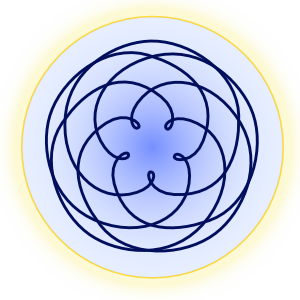Life after Death
Is there anything after death? What is death anyway? This question is at the core of understanding our existence and our role in life. Physicalist scientists assert that no life after death has been proven to them and that people only live once. We should understand deeper how nefarious is the “we only live once” claim, which has been inserted into the minds of the masses during many centuries.
Published May 27, 2021
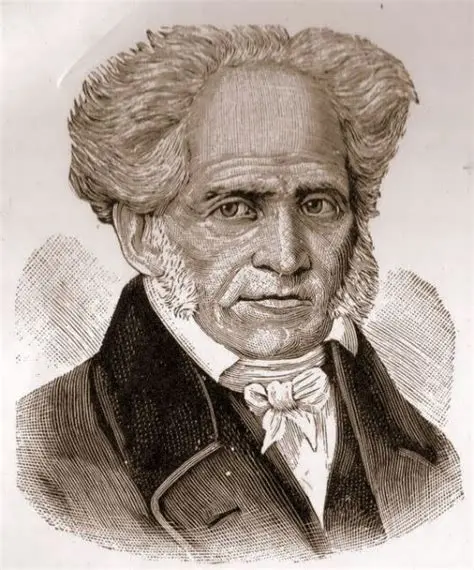
Belief in life after death and reoccurring earthly lives of human beings have been common to several civilizations through Earth’s mankind long history. For example Arthur Schopenhauer (1788-1860) describes the doctrine of metempsychosis (a term for rebirth used by ancient Greek philosophers), springing from the earliest and noblest known ages of the human race, as the teaching of all religions, with the exception of that of the orthodox Jews and the two which proceeded from it (Christianity and Islam)1. During the last 2000 years the proponents of Judaism, Christianity and Islam have established a view that the individual is born only once and has one existence in the physical world. Even though the original teaching of Christos held reincarnation as an evident fact of reality2 and there are claims that early religious doctrine of Christianity included a belief in rebirth in the first centuries of our era3, it was eventually excluded from the later versions of the Christian doctrine. Omission of reincarnation from the New Testament was decided through different ecumenical councils, lastly in the Second Council of Constantinople in 553 A.D. by condemning the teaching of Origen of Alexandria, who taught the pre-existence of souls and belief in reincarnation, e.g. in his work “De Principiis”4. It was essential for the powers behind the indoctrination and popularization of the biblical Christian belief to get rid of reincarnation, which was in direct contradiction with the devilish invention of “sin as a crime against an infinite being who requires infinite punishment”. Such doctrine was successfully used to take the masses emotionally into hostage, subordinate them to Earthly representatives of such a “God” and rule their minds with much bigger ease.
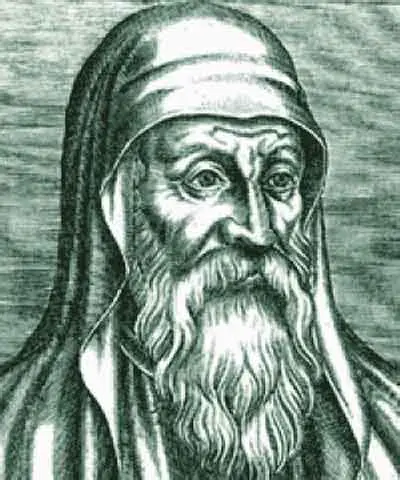
In the 20th century those religious just-one-life concepts of Christianity, Islam and Judaism have been complemented by a physicalist life-view and belief of the prevalent part of the scientific community, which propagates the theory of “death ends it all”. Science researches the material visible world using common physical senses and its extensions (devices and apparatuses) and is yet not open to nor reaches out to anything beyond its limited research area. Its present view on existence sees the human being as a body of chemical compounds and protoplasm, which disintegrates after the organismal death, hence also denies the possibility of a new life for the human being after the end of such existence.
Of course, serious seekers are looking for a broader and much more comprehensive world view. They acknowledge that modern scientific methods have still very limited possibilities for researching and finding a solid evidence on “the invisible part of existence”, even if it is acknowledged that reality includes more than our common physical senses are able to verify. Serious seekers base their search on common sense, critical analysis and ask questions like:
- if we are only living once, what then is the sensible meaning of that extremely short earthly life?
- if we are only living once, how can be explained so remarkably big differences in people’s understanding, skills and abilities?
- if we are only living once, what can be the explanation behind the seeming “justness or unjustness of life” – e.g. that some people have the privilege of definite fortunes and the others are caught up with serious misfortunes, that the lives of some people are filled with enduring happiness and the lives of others with seemingly incurable suffering etc?
Nefarious “we only live once” concept
It is quite obvious that for serious seekers it is impossible to be content with a doctrine of man’s just one earthly incarnation. And through centuries there have been Western thinkers, who have embraced the concept of reincarnation (please see: Insights on Life after Death and Reincarnation). Still, even on the 21th century the doctrine of “death ends it all” is at the core of the prevalent physicalist belief and has been a major weapon in the hands of those, who by all means aim at fighting consciousness development and the knowledge of reality in our planet.
The concept of “we only live once” has had serious consequences on people’s mindset and their perspective of living a full and rich life:
 It has misguided millions and kept them away from searching for the
true meaning of life. If there is just one life, which simply ends with
the ceasing of the physical organism, then people will hardly ask for
the meaning of that one life. And the opposite, if the cycle of rebirth
and reincarnation is one of the pillars of reality, then there should
definitely be an aim to that all. This aim should be development of that
“something”, which is the fundamental element of existence and also of
being a human being – namely development of consciousness.
It has misguided millions and kept them away from searching for the
true meaning of life. If there is just one life, which simply ends with
the ceasing of the physical organism, then people will hardly ask for
the meaning of that one life. And the opposite, if the cycle of rebirth
and reincarnation is one of the pillars of reality, then there should
definitely be an aim to that all. This aim should be development of that
“something”, which is the fundamental element of existence and also of
being a human being – namely development of consciousness. It has diminished the sense of responsibility as there is no obvious
and visible connection between people’s thoughts, emotions, words and
deeds and their consequences during an incredibly short life of a normal
individual. But if our existence is not measured just by one life-time,
but there are unlimited number of lives to reap what one has sown, then
it gives a totally different perspective to every individual and brings
about an increase in responsibility for one’s thoughts, emotions, words
and deeds.
It has diminished the sense of responsibility as there is no obvious
and visible connection between people’s thoughts, emotions, words and
deeds and their consequences during an incredibly short life of a normal
individual. But if our existence is not measured just by one life-time,
but there are unlimited number of lives to reap what one has sown, then
it gives a totally different perspective to every individual and brings
about an increase in responsibility for one’s thoughts, emotions, words
and deeds. It has increased the fear of death, which is the basis for all other
fears. Death has been a big unknown factor in people’s lives for
centuries, has brought misery and depression and with this fear the
earthly powers have for a long time dominated people’s minds and lives
with unconscious negative effect. If you eliminate this fear by a common
understanding that you have lived and “died” many times before, that
there is life also between incarnations and in fact “death” is a
transformation from one material world to another, then fear of death
will cease to hold such a bondage over humanity.
It has increased the fear of death, which is the basis for all other
fears. Death has been a big unknown factor in people’s lives for
centuries, has brought misery and depression and with this fear the
earthly powers have for a long time dominated people’s minds and lives
with unconscious negative effect. If you eliminate this fear by a common
understanding that you have lived and “died” many times before, that
there is life also between incarnations and in fact “death” is a
transformation from one material world to another, then fear of death
will cease to hold such a bondage over humanity. It has strengthened the physicalist attitude, which believes that there
exists nothing (material) beyond the visible physical reality and that
there can be life only in coarse physical matter, visible to the
so-called normal individual. It has also directed mankind’s attention
mostly to physical interests and visible physical world, to material
comfort, material possessions, and material undertakings, which are
believed to be the aim of that only earthly life.
It has strengthened the physicalist attitude, which believes that there
exists nothing (material) beyond the visible physical reality and that
there can be life only in coarse physical matter, visible to the
so-called normal individual. It has also directed mankind’s attention
mostly to physical interests and visible physical world, to material
comfort, material possessions, and material undertakings, which are
believed to be the aim of that only earthly life.
Nevertheless, there has always been a world-view that explains the meaning of life and the role of reincarnation and life after death in it. And all those seeking for such a world-view in order to live accordingly, have been able to find it in one way or another.
Hylozoic viewpoint on life after death and reincarnation
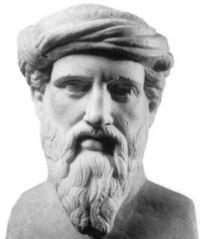
Philosopher Pythagoras, the leader of an esoteric knowledge order, compiled ancient wisdom into a groundbreaking world-view, which he called hylozoics (spiritual materialism). It is comprehensible for Westerners also in our modern times and reincarnation is one of the pillars of this comprehensive knowledge of reality.
The basic tenet of hylozoics is that all matter is composed of primordial atoms which Pythagoras called monads – the smallest possible parts of primordial matter and the smallest firm points for individual consciousness. These monads are indestructible, because of which there cannot be any death, only disintegration of form. Once the monads’ potential consciousness has been roused to life, their consciousness development is continued through a series of natural kingdoms in ever higher worlds (altogether 49 worlds of existence), until they attain the highest divine kingdom (worlds 1-7).
Pythagoras stated that there is rebirth of everything, meaning that all material forms (atoms, molecules, aggregates, worlds, planets, solar systems, aggregates of solar systems, etc.) are subject to the law of transformation. They are being formed, changed, dissolved, and re-formed. This is inevitable, since in the long run no material forms tolerate the wear of the cosmic material energies.5
What is death
Mankind is ignorant of the fact that the individual continues to exist after he has left his organism with its etheric envelope. Every religion has some ideas about the hereafter, and they are all wrong.6
There is nothing that can properly be called death in the entire cosmos, which is composed of immortal monads (primordial atoms). There is no death in the sense of the destruction of the self. What ignorance calls “death” is the dissolution of the envelopes of the monads. The monads go on living in other envelopes, however. The monads develop in and through envelopes in a continuously ascending series of forms of life. All forms of life in the cosmos are destroyed. A form can be destroyed but not the life in the form.
So-called normal death means that an envelope is discarded when it has ceased to offer the self opportunities of new experience and further consciousness development. Still people are so ignorant of life that they believe that “death is the end of it all”, whereas it is the liberator from an existence unfit for life. If people knew that they have “died” thousands of times and will do it many times yet, they would not worry, as they do, about their liberation from the physical organism.7
Rebirth as a cornerstone for consciousness development
The meaning of life is consciousness development. Incarnations are opportunities for man to develop consciousness and so to reach the next higher kingdom.8
Reincarnation teaches us that the individual’s development is his own work. All knowledge he received from others for nothing will be lost, and only the experiences he had himself and worked upon will be his own. Most people forget their experience and do not work them into insight and understanding. They walk through life, being happy to parrot others, thinking, believing, valuing, doing as all the others do. As for the rest, they try by all means to “kill time”. And so most incarnations will be “wasted lives”, opportunities of development – necessary anyhow – thrown away.9
We must be reborn until we have solved our own problems of life and learnt how to apply the laws of life without friction. That is something with which nobody else can help us. We can certainly receive knowledge of life and of the laws of life from outside. Applying them is our own business, however.10
It is the law of reaping that forces rebirth. All sowing must be reaped, and we have old sowing left from hundreds of incarnations. Everything must be redeemed.11
When people have realized that they will come back, they will be more anxious to reach higher levels, to improve existing conditions so that they stand a chance of being spared the same misery as before. For if mankind has not developed during the time that elapses until they return, they will be as disorientated as before, victims of the errors of the old idiologies. It is to the interest of everybody to do everything to acquire and spread the knowledge of reality and life, to contribute to arranging the social and economic conditions so that they will not end up in misery again.12
Man is reborn as a man (never as an animal) tens of thousands of times until he has acquired subjective and objective self-consciousness in the five material envelopes (physical, etheric, emotional, mental and causal) of his three atomic worlds (physical, emotional and mental), become fully conscious in his permanent causal envelope.13
The value of rebirth
Rebirth explains:
- the seeming injustice of life – all good and evil that man meets with is his own work and in new lives the individual has to reap what he has sown in previous lives,
- our innate latent understanding, and
- our previously acquired dispositions (Platon).14
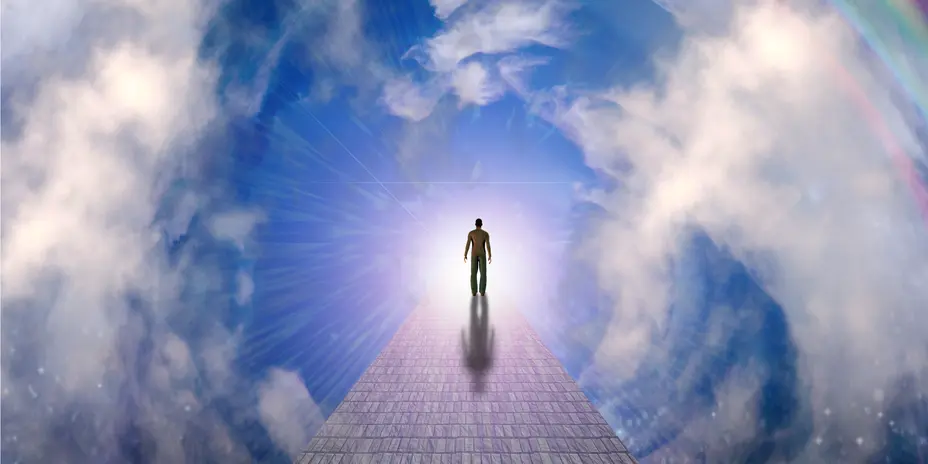
But rebirth explains more than that. It refutes 99 per cent of everything that mankind has accepted as truth.15
The understanding of the reality of reincarnation will bring about a total change in mankind’s view on life in most respects. It will demonstrate our community with all mankind. Some few examples of phenomena hostile to life that will be eliminated in the process may clarify this:
- Hatred between the sexes: when people understand that the individual is born now as a man, now as a woman.
- Hatred between nations: when people understand that the individual is born into all nations.
- Hatred between religions: when people understand that the individual is born into all religions.
- Hatred between social classes: when people understand that the individual is born into all social classes.
- Superciliousness: when people understand that the individual is born now with a highly efficient brain, now with a defective brain.16
One incarnation is like a day in a five-hundred-year life. That idea provides a perspective and clarifies the relative insignificance of an incarnation. It is a big mistake, however, to use it as a motive for laziness or escape from reality, as is so common e.g. in India. In so doing you would just prolong the five-hundred-year life and increase the troubles of your incarnation considerably. Also, the powers of destiny are not pleased by having to provide for individual incarnations unnecessarily.17
Life between incarnations

When the individual “dies” or in other words, leaves his worn-out organism with its etheric envelope, he goes on living in his emotional envelope and, when this is dissolved, in his mental envelope. When this too is dissolved, he waits, asleep in his causal envelope, to be reborn into the physical world, which is incomparably the most important, since it is in this world that all human qualities must be acquired, and it is only in this world that he has the possibility of freeing himself from emotional illusions and mental fictions.
Life between incarnations is a period of rest in which man does not learn anything new. The sooner the self can free itself from its envelopes of incarnation, the quicker it develops.
At the same time as the etheric envelope frees itself from the organism in the so-called process of death, the emotional envelope frees itself from the etheric envelope which remains near the organism and dissolves along with it. Man’s life in the emotional world can prove completely different for different individuals, depending on their levels of development.
Like the physical world (49:2-7), the emotional world has six successively higher regions (48:2-7). Most people are nowadays objectively conscious from the beginning in the three regions that correspond to the lower three regions of the physical world. (Mental consciousness, however, remains subjective.) Objects in those regions are material counterparts of the material forms of the physical world, which fact often causes the newcomer to think that he still lives in the physical world. During this first period, the individual can also associate with his friends in the physical world when they are asleep. Without esoteric knowledge he believes, like everybody else, that the highest region in this new world of his is “heaven and his final destination in eternity”.
The emotional envelope dissolves gradually: first its lowest molecular kind, then the lowest but one, etc. When the lowest three have dissolved it is not possible for the individual to contact the visible physical world. There are those who already in the process of physical death are able to free themselves from the lower three molecular kinds of their emotional envelope. In the three higher regions of the emotional world, the existing material forms are imaginative creations made by the individuals in those regions. For emotional matter forms itself in accordance with the slightest hint from consciousness, the ignorant neither understanding the cause nor being able to grasp how it happened. The individual seldom learns anything really new while in the emotional world, and in the mental world never.
The life of the emotional envelope can vary as greatly as that of the organism. After the dissolution of the emotional envelope, the individual in his mental envelope leads a life of thought that is absolutely subjective, not suspecting the impossibility of apprehending objective reality in this world. But apprehension of reality, bliss, and perfection, omniscience and omnipotence are absolute. All his fantasies become absolute realities to him. Everything he wishes is instantly there and all his friends, all the “great ones” of mankind, are with him, all equally perfect.
The independent life of the mental envelope can vary from a minute or so (in the case of the barbarian) to thousands of years. It all depends on how many ideas the individual has collected during physical life and how vital they are. Platon is said to have material to work up for ten thousand years.
Upon the dissolution of the mental envelope, the individual in his causal envelope sinks into dreamless sleep that will last until the time comes for rebirth and an embryo has been formed for him in a physical maternal body. He awakens with a desire for a new life and forms instinctively, by means of his causal envelope, new mental and emotional envelopes, these being the necessary communication links. It will be the task of the growing child to use its latent qualities to develop the ability of consciousness in them.18
Not remembering previous lives is an advantage
The self (or monad’s consciousness) knows nothing about its previous personalities in previous incarnations because its memory has become latent. The disadvantage of the veil thrown over the past is outbalanced a thousand times by its advantages. That vision is more than the normal individual would stand. The knowledge of what remains to be reaped would paralyse without affording the least benefit, and would just complicate things. But when the self is ripe and ready, meaning that it is has acquired causal consciousness, which is the sum total of all the experiences and knowledge in the human kingdom and can then study its previous existences, it will remember everything.19
Modern scientific research into life after death
Though most people do not remember their previous lives, there are those, who for some time can remember and who are certain that they have lived before. Remembering one’s previous life is rare, but it occurs on every continent, though more frequently in countries and cultures in which the belief of reincarnation is stronger. A systematic survey of cases in a district of northern India in the 1970s showed that about one person in 500 claimed to remember a previous life.20
Hundreds of such cases have been recorded during the 20th and 21th century. Several scientists have studied them and dedicated their lives to collect an ample amount of evidence on those cases. One of the most thorough scientific researchers has been the psychiatrist Dr Ian Stevenson (1918-2007), who with his team at the University of Virginia conducted more than 2,500 case studies over a period of 40 years of children who had claimed to remember their past lives. He methodically documented each child’s statements and then identified the deceased person the child identified with, and verified the facts of the deceased person’s life that matched the child’s memory. He also matched birthmarks and birth defects to wounds and scars on the deceased, verified by medical records such as autopsy photographs.
The most frequently occurring event or common denominator relating to rebirth is that of a child remembering a past life. Children usually begin to talk about their memories at the age of two or three and may talk about a previous family or the way they died in a previous life. Such infantile memories gradually dwindle when the child is between four and seven years old. There are of course always some exceptions, such as a child continuing to remember its previous life but not speaking about it for various reasons.
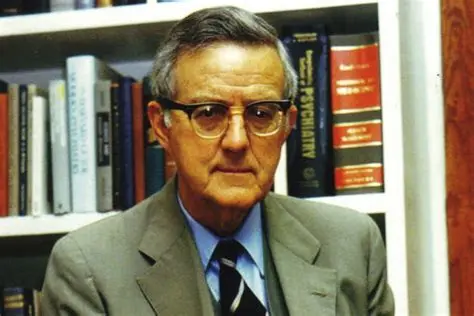
Most of the children talk about their previous identity with great intensity and feeling. Often they cannot decide for themselves which world is real and which one is not. They often experience a kind of double existence where at times one life is more prominent, and at times the other life takes over. This is why they usually speak of their past life in the present tense. Almost all of them are able to tell about the events leading up to their death.
Some unusual forms of behaviour frequently observed by Dr Stevenson were the following:
- In 35% of cases he investigated, children who died an unnatural death developed phobias (e.g. drowing in previous life connected to fear of water etc)
- Frequently observed form of behaviour were so-called philias, which concerned children who expressed the wish e.g. to eat different kinds of food or to wear clothes that were different from those of their culture. Also, if a child had addiction as an adult in a previous incarnation, he may express a need for these substances at an early age in a new incarnation.
- Often children who were members of the opposite sex in their previous life show difficulty in adjusting to the new sex. These problems relating to the ‘sex change’ can lead to homosexuality later on in their lives. Former girls who were reborn as boys may wish to dress as girls or prefer to play with girls rather than boys.
During his original research into various cases involving children’s memories of past lives, Dr Stevenson did note with interest the fact that these children frequently bore lasting birthmarks which supposedly related to their murder or the death they suffered in a previous life. Stevenson’s research into birthmarks and congenital defects has such particular importance for the demonstration of reincarnation, since it furnishes objective and graphic proof of reincarnation, superior to the – often fragmentary – memories and reports of the children and adults questioned, which even if verified afterwards cannot be assigned the same value in scientific terms.
In many cases presented by Dr Stevenson there are also medical documents available as further proof, which are usually compiled after the death of the person. In the cases he researched and “solved” in which birthmarks and deformities were present, he didn’t suppose there was any other apposite explanation than that of reincarnation. Only 30%-57% (a range according to different studies) of these deformities can be put down to birth defects which related to genetic factors, virus infections or chemical causes (like those found in children damaged by the drug thalidomide or alcohol). Apart from these demonstrable causes, the other 43% to 70% of cases have been assigned by the medical profession to the category of “unknown causes” and has no other explanation than that of mere chance.21 So, according to Dr. Stevenson, the three different values of the cases with birthmarks and birth defects are the following: they provide objective types of evidence, they suggest the influence of a discarnate personality on a later-born baby, and they help us understand why, in some cases, a person with a birth defect has it at a particular location.22 He has described his research into birthmarks and defects in a 2,268-page, two-volume book, Reincarnation and Biology: A Contribution to the Etiology and Birth Defects (1997).
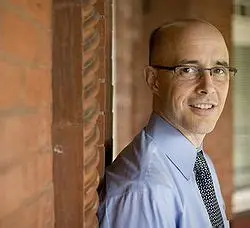
After Dr Ian Stevenson’s retired in 2002, his work was carried on by Dr Jim B. Tucker, a psychiatrist at the University of Virginia, who has recorded a number of children in the USA with same kind of memories. He has published notable books Life before Life and Return to Life.

In India, professor Satwant Pasricha of NIMHANS University at Bangalore has been for decades a collaborator with Dr Stevenson in researching reincarnation and near-death experiences. Since 1973, she has investigated and participated in about 500 cases of reincarnation involving children who claim to remember previous lives. She has written a book Can the Mind Survive Beyond Death? In Pursuit of Scientific Evidence in 2008 and co-authored Making Sense of Near-Death Experiences in 2011.
Conclusion
There is rebirth of everything and everything is subject to transformation. In the human kingdom this means that human beings do come back in flesh (in Latin re means “again” and in caro means “flesh”) to the physical world in order to develop their consciousness. Tens of thousands of incarnations are needed for that as development of consciousness is a remarkably slow process and takes time.
Reincarnation is an essential part of the profound knowledge of reality. Pythagoras’ teaching of hylozoics explains its role and functioning in a comprehensive way and connects it with the broader view of existence. Most people do not remember anything of their previous lives, but there are few who do in certain circumstances. Some courageous scientists have in the 20th century conducted research on those who claim to remember their previous life, but those are just first steps in discovering the rich “invisible” world around us.
The quicker humanity accepts the fact of reincarnation and the meaning of life as consciousness development, the better are its chances to thrive and increase its comprehension on the meaning of life and how to fulfill it.
Arthur Schopenhauer The World as Will and Idea (Chapter *On Death") ↩︎
Henry T. Laurency, Knowledge of Life One. Gnostics, 2.13.15 ↩︎
Oskar Reponen I have lived before (1979), p 120-121 ↩︎
Ibid, p 122-123 ↩︎
Henry T. Laurency, The Knowledge of Reality, 1.31.1 ↩︎
Henry T. Laurency, The Way of Man. The First Self, 3.31.1 ↩︎
Henry T. Laurency, Knowledge of Life Three. Life Between Incarnations, 10.1.6 ↩︎
Henry T. Laurency, Knowledge of Life Three. Reincarnation, 11.2.17 ↩︎
Ibid, 11.2.23 ↩︎
Ibid, 11.3.6 ↩︎
ibid, 11.3.11 ↩︎
Ibid, 11.2.15 ↩︎
Ibid, 11.4.7; Knowledge of Reality, 1.31.4 ↩︎
Henry T. Laurency, Knowledge of Life Three. Reincarnation, 11.1.3 ↩︎
Henry T. Laurency, Knowledge of Reality, 1.31.4 ↩︎
Henry T. Laurency, Knowledge of Life Three. Reincarnation, 11.2.5-10 ↩︎
Ibid, 11.15.1 ↩︎
Henry T. Laurency, Knowledge of Reality, 1.34.25-34 ↩︎
Henry T. Laurency, The Philosopher’s Stone, 3.65.1. ↩︎
I.Stevenson Where Reincarnation and Biology Intersect (1997), p 1 ↩︎
I.Stevenson Birthmarks and Birth Defects Corresponding to Wounds on Deceased Persons, Journal of Scientific Exploration, Vol. 7 , No. 4, pp. 403-410, 1993 ↩︎
I.Stevenson Where Reincarnation and Biology Intersect (1997), p 3 ↩︎
